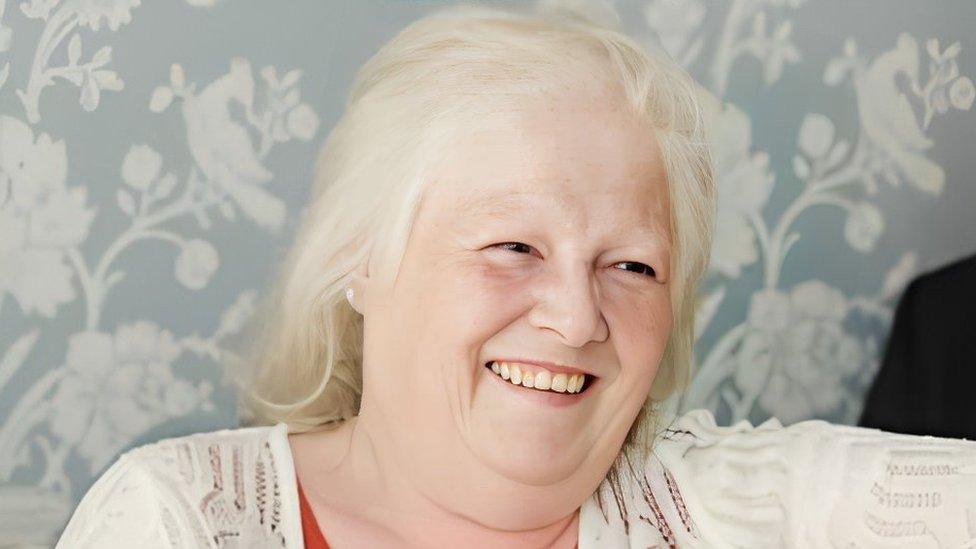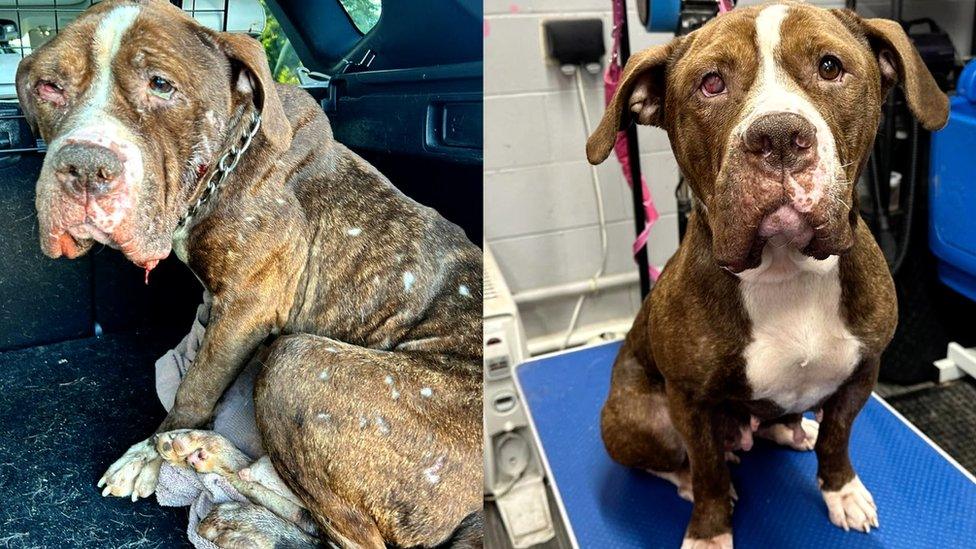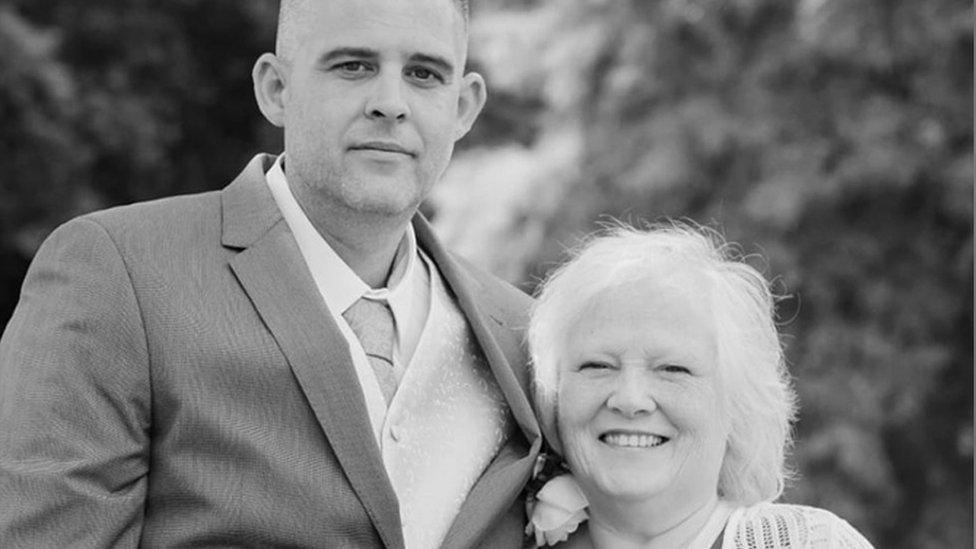Is the American XL bully ban working?
- Published

Esther Martin was reportedly heard shouting "get it off"
On 1 February the American XL bully ban came into force in England and Wales as a result of Rishi Sunak's promise to end the recent "horrendous attacks".
Two days later Esther Martin, 68, was killed by XL bullies inside a property in Jaywick, Essex.
On Tuesday the owner of the dogs was bailed with conditions for a further two months until 2 May.
The case reveals some of the challenges for police officers as they try to enforce the new law.
What happened to Esther Martin?
Ms Martin, from Woodford Green in London, had travelled to a house on Hillman Avenue, Jaywick on Saturday 3 February to visit her 11-year-old grandson.
Inside the property were two large, unmuzzled dogs - Bear, a young male; Beauty, a two-year-old female, and eight of their puppies.
The dogs' owner, Ms Martin's son-in-law Ashley Warren, who's a 39-year-old rap artist, had gone to London to shoot a music video.

Ashley Warren has been bailed until 2 May
Sometime before 4pm Ms Martin was bitten on the arm and people described seeing her grandson run outside screaming.
Firearms officers arrived within minutes and shot both dogs dead.
Ms Martin, who was a grandmother to eight children, died at the scene.
She suffered "unsurvivable" wounds, according to the coroner's officer, while apparently trying to stop the dogs' puppies from fighting.
Mr Warren was arrested on dangerous dogs offences and has been released on conditional bail until 2 May.
Were the dogs XL bullies?

An example of a dog that Defra says is an XL bully
First the police had to establish what type of dogs killed Esther Martin.
Bear and Beauty were understood by the family to be American XL bullies.
But during a press conference, Chief Superintendent Glen Pavelin of Essex Police urged journalists "not to speculate on the breed of animals involved".
Determining a dog's type can cause difficulties because the process is based entirely on the way they look, not their specific breed.
Under the government's new guidance, external adult male and female XL bullies should measure 20 inches and 19 inches from the ground to the withers (top of the shoulders) respectively.
Their heads should be "heavy and broad", supported by a "muscular, slightly arched" neck.
The founder of a dog rescue in the East of England, who specialises in rehoming bully dogs and wanted to remain anonymous, said she did not believe Bear and Beauty were XLs.
"Judging from the photographs, I would say the brown dog was a Dogue de Bordeaux/Pitbull mix, and the black dog was a Rottweiler/Mastiff mix," she said.

Bear and Beauty were shot dead by police inside a house in Jaywick
Nonetheless, six days after the attack, Essex Police announced that the dogs met the breed type.
A spokesman said the assessment had been carried out by a vet and a dog legislation officer during the post-mortem examination.
What will happen to the puppies?
The puppies found inside the Jaywick property present another problem.
A police spokesman told the BBC they had received veterinary care and that an assessment to identify their breed could only take place once "grown to full adulthood".
He added that any suggestion the puppies must be XL bullies because of their parents was "part of the investigation".
In the meantime, the puppies will be held in a police kennels, which vets say are unsuitable for keeping dogs long-term and can result in behavioural problems.
Last month Mark Hobrough from the National Police Chiefs' Council said police kennels were being enhanced to cope with expected higher demand and logistical challenges for officers.
What new offences do police need to consider?
American XL bullies are now prohibited under the Dangerous Dogs Act 1991, external, which means it is an offence to be in possession of one unless they are registered exempt; neutered; microchipped; insured; muzzled, and kept on a lead in public.
Convictions can result in a range of sentences from fines to jail terms.
Police may also consider the separate offence of being in charge of a dog dangerously out of control.
This offence is aggravated if the dog causes injury or death, and applies regardless of intent; the dog's breed or where the offence might have taken place.
The offence does not apply if the owner can prove the dog was left in the control of a fit and proper person.
How many illegal XL bullies could there be?
Police in England and Wales have been receiving training to recognise and seize unregistered XL bullies, but the scale of the challenge could be huge.
In October last year a panel of experts told the Environment, Food and Rural Affairs Committee, external there could be up to 150,000 XL bully dogs in the UK.
The Department for Environment, Food and Rural Affairs (Defra) has said that approximately 55,000 dogs had been exempted, external by the deadline.
This means there may be 95,000 illegal XL bullies in the UK, possibly more depending upon the types of dogs already exempted.

Hope, who was found dumped in Clacton in January, is being nursed back to health by her new owner
Carly Lou who runs a dog rescue in Essex said there were still "lots of unregistered, unmuzzled XL bully dogs, used by criminals for status or to protect their drugs".
"Since the ban, these dogs are being abused worse than ever - caged for long periods; burned; beaten; starved; abandoned and killed.
"Sadly other big dogs are being dumped and seized too, just because they look the type," she said.
A Defra spokesperson was approached for comment.

Got a story? Email eastinvestigationsteam@bbc.co.uk, external or WhatsApp 0800 169 1830. Follow East of England news on Facebook, external, Instagram, external and X, external.
- Published24 March

- Published6 February 2024
